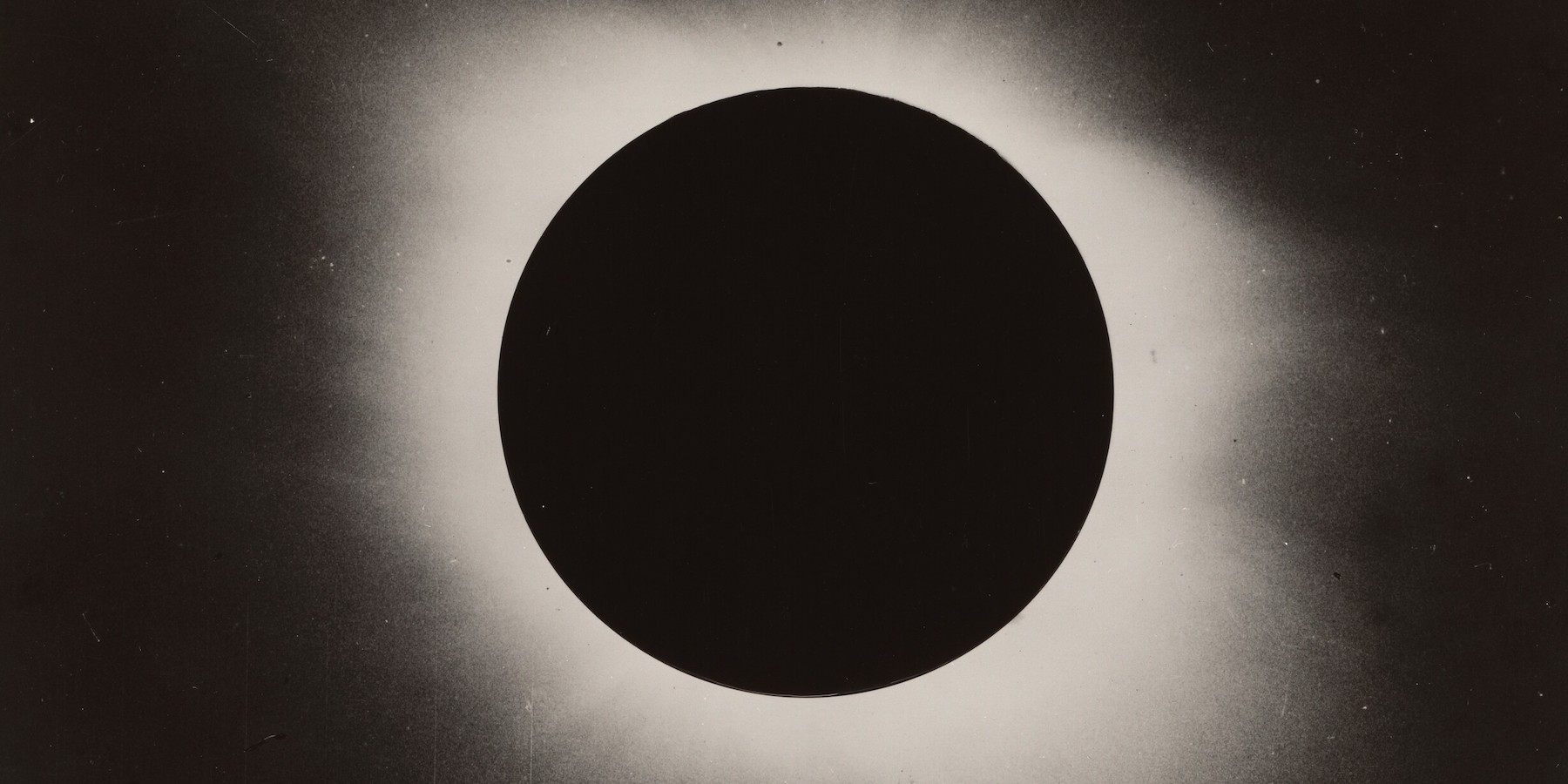A Fashionable Spin on Spring in Art
Social media influencer Holly Pan's fashion forward visit to the National Gallery of Art reminds her of spring.
Art & Society
min read

The celestial world has transfixed artists for centuries. And few cosmic events are as dramatic as a solar eclipse.
Whether you’ll have a chance to see this year’s total solar eclipse or not, you can explore our collection. Discover depictions of eclipses—and other awe-inspiring images of the cosmos.
The eclipse chaser
German photographer Wolfgang Tillmans took his earliest photographs of the night sky when he was 10 years old. He is a devoted eclipse chaser and has witnessed at least five total solar eclipses. Tillmans made these photos of the 1998 total solar eclipse in Aruba. The black and blue images are from his camera pointed skyward, while the beige photos are of the ground. Tillmans captures the crescent shadows that leaves cast during an eclipse, nature’s own pinhole cameras.

Wolfgang Tillmans, Total Solar Eclipse Grid, 1998, 21 chromogenic prints, Gift of The Heather and Tony Podesta Collection, 2014.150.17
In astronomical terms, a solar eclipse is straightforward. The moon passes between the earth and sun, obscuring our view of the sun. But on the ground, it’s a strange experience. The sudden darkness seems otherworldly—even apocalyptic. Tillmans describes the event:
You could see the shadow arrive, travelling at the speed of an aeroplane. You could look down the horizon and then it came in a ‘whoosh’ right over you... Suddenly there is the corona in the sky; this ring of ice-cold fire. You see stars and planets and black sky. The horizon has an eerie, very dark, dusky light. It’s totally shocking because it’s so powerful; something that comes from outside this planet and touches you. And then after three minutes it’s all over and it’s daylight again.
The anonymous recordings of 1932
We know little about these images of the 1932 eclipse, which passed through part of New England and Canada. The first, a gelatin silver print, records the corona of the total eclipse. Our colleagues at the Smithsonian Air and Space Museum think that astronomers at universities in the area, such as Harvard, likely made these. Dayton, Ohio, only caught views of a partial eclipse, which is recorded in the second image.

American 20th Century, Eclipse, Corona, August 31, 1932, gelatin silver print, Gift of Mary and Dan Solomon, 2018.21.9

American 20th Century, Eclipse, August 31, 1932, gelatin silver print, Gift of Mary and Dan Solomon, 2018.21.8
The eclipse, personified
Elihu Vedder was an American symbolist painter best known for his murals at the Library of Congress. In those murals, he shows ideals like peace and prosperity as figures of women. Similarly, in his study for the painting The Eclipse of the Sun by the Moon, the moon is a winged figure. She blocks the light of the sun with both her wings and the rocky sphere of the moon itself.

Discover more cosmic images

Blair Hughes-Stanton, Eclipse, 1961, color woodcut and lithograph, Rosenwald Collection, 1964.8.1098

American 20th Century, National Aeronautics and Space Administration, Title from caption on object: “Glenn Prepares for Space Flight”, January 1962, gelatin silver print, Gift of Mary and Dan Solomon, 2018.177.533

Bill Anders, National Aeronautics and Space Administration, Title from caption on object: “How We Look from Outer Space”, December 24, 1968, gelatin silver print, Gift of Mary and Dan Solomon, 2018.177.584

Alexander Calder, Movement in Space, 1932, orange gouache and black ink on wove paper, Gift of Mr. and Mrs. Klaus G. Perls, 1996.120.20

Rockwell Kent, Lunar Disintegration, 1937, lithograph in black on wove paper, Gift of Mrs. Robert A. Hauslohner, 1991.116.66

James Nasmyth, The Moon: Considered as a Planet, a World, and a Satellite, 1874, bound volume of Woodburytypes, Gift of Mary and Dan Solomon and Patrons' Permanent Fund, 2006.133.110

Joseph A. Mugnaini, Prometheus, c. 1940, lithograph, Reba and Dave Williams Collection, Gift of Reba and Dave Williams, 2008.115.3639

Charles Ross, Star Space Daylight, Sun Center by Earth Degree, 1980, screenprint on two sheets of wove paper, Gift of Nancy and Miles Rubin, 1984.104.19.a-b

Nancy Graves, Sabine D Region of the Moon, Lunar Orbiter Site II P-6 Southwest Mare Tranquilitatis, 1972, gouache and ink over graphite on Arches paper, Gift of Esther Cattell Schmitt, 1992.45.8

James Turrell, Roden Crater: Fumerole with Solar and Lunar Alignments, 1986, gelatin silver print, Gift of Gemini G.E.L. and the Artist, 2001.74.14.9

Unknown 20th Century, Title from caption on object: “Macchie Solari, Foto Osservatorio di Monte Wilson (Sunspots, Mount Wilson Observatory)”, c. 1971, gelatin silver print, Gift of Mary and Dan Solomon, 2018.177.530

M.C. Escher, Double Planetoid, 1949, wood engraving in dark blue, black and brown, printed from three blocks, Rosenwald Collection, 1964.8.740

Dorothy Dehner, Lunar Series #3, 1970, lithograph in black on wove paper, Gift of The Judith Rothschild Foundation, 1997.63.5

Henry Mark, Galaxy, 1947, screenprint, Reba and Dave Williams Collection, Gift of Reba and Dave Williams, 2008.115.3341